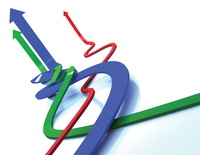
Lead Image © tigger11th, Fotolia.com
Email sender verification with DMARC
Traffic Control
Faking email senders is easy. Because email was not originally intended as a global communication tool, the system offers no convenient means for checking email addresses. Developers and large corporations have thus bolted additional functions onto the mail log, thus retrofitting sender verification. DMARC (Domain-based Message Authentication, Reporting, and Conformance) [1], which is the result of cooperation between Google, Yahoo, and other major corporations, seeks to reduce spam and tackle the problem of sender verification at the root.
Based on SPF and DKIM
DMARC checks the domain used by an address, thus discovering whether the sender is legitimate. To check the domain, DMARC relies on two established technologies: DKIM (Domain Keys Identified Mail) and SPF (Sender Policy Framework).
DKIM is a technology developed by Yahoo, which practically makes the DNS servers a CA and supports mail verification within the scope of asymmetric encryption. When the receiving mail server receives an email message, the message is signed with a digital key. DMARC uses the public key provided by the DNS server in the sender's domain to verify or refute the origin of the mail. SPF uses TXT entries in domain zones to determine which servers are allowed to email from this domain.
DMARC combines these two features and adds a new feature on top: Admins can create a set of rules to decide whether or not incoming email has successfully negotiated SPF or DKIM. In addition to the existing TXT records for DKIM and SPF, admins simply create a third TXT record for DMARC that describes what to do with messages that fail SPF or DKIM. The record for Yahoo, one of the co-inventors of DMARC, is merciless:
v=DMARC1; p=reject; sp=none; pct=100; rua=mailto:dmarc-yahoo-rua@yahoo-inc.com, mailto:dmarc_y_rua@yahoo.com;
The
...Buy this article as PDF
(incl. VAT)
Buy ADMIN Magazine
Subscribe to our ADMIN Newsletters
Subscribe to our Linux Newsletters
Find Linux and Open Source Jobs
Most Popular
Support Our Work
ADMIN content is made possible with support from readers like you. Please consider contributing when you've found an article to be beneficial.






